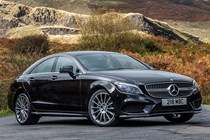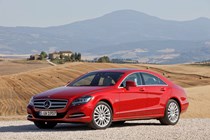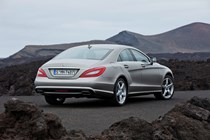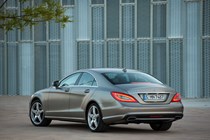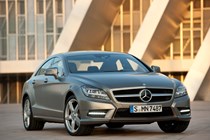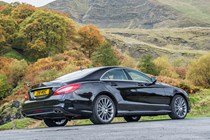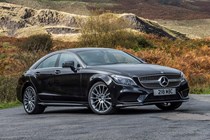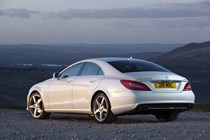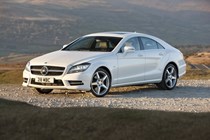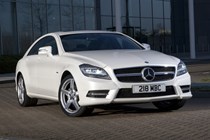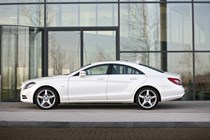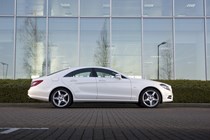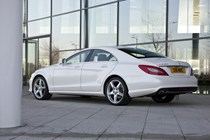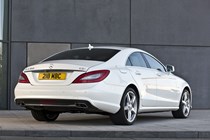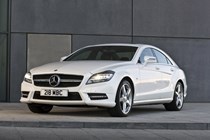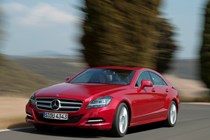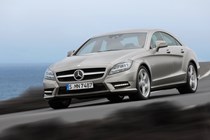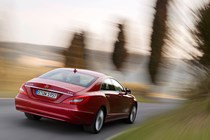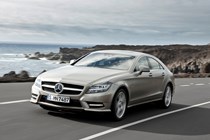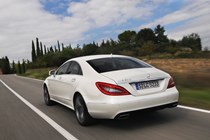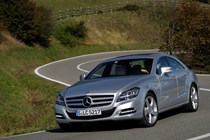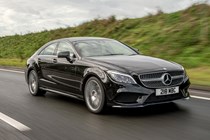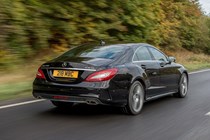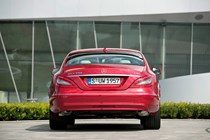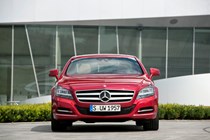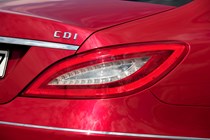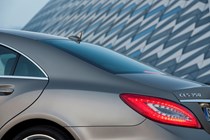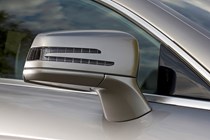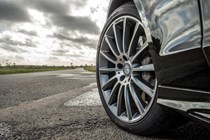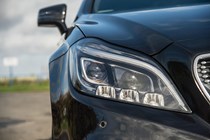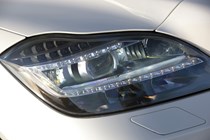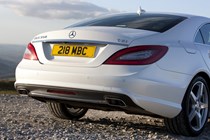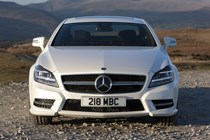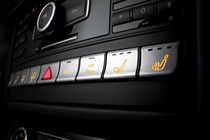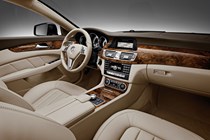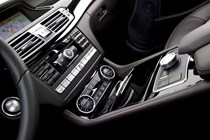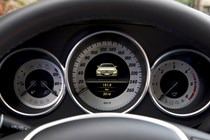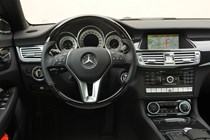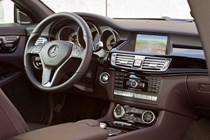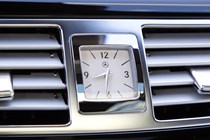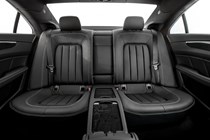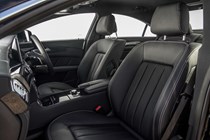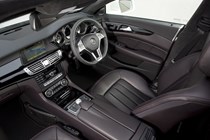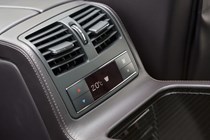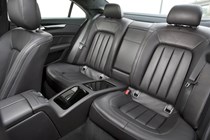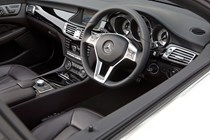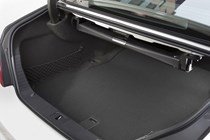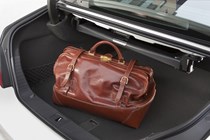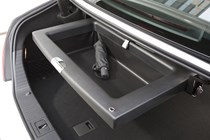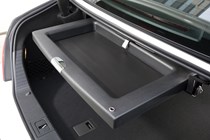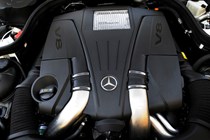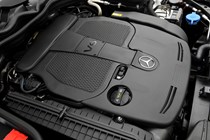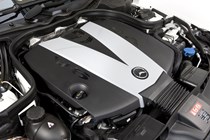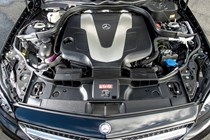
Mercedes-Benz CLS Coupe (2011-2018) engines, drive and performance
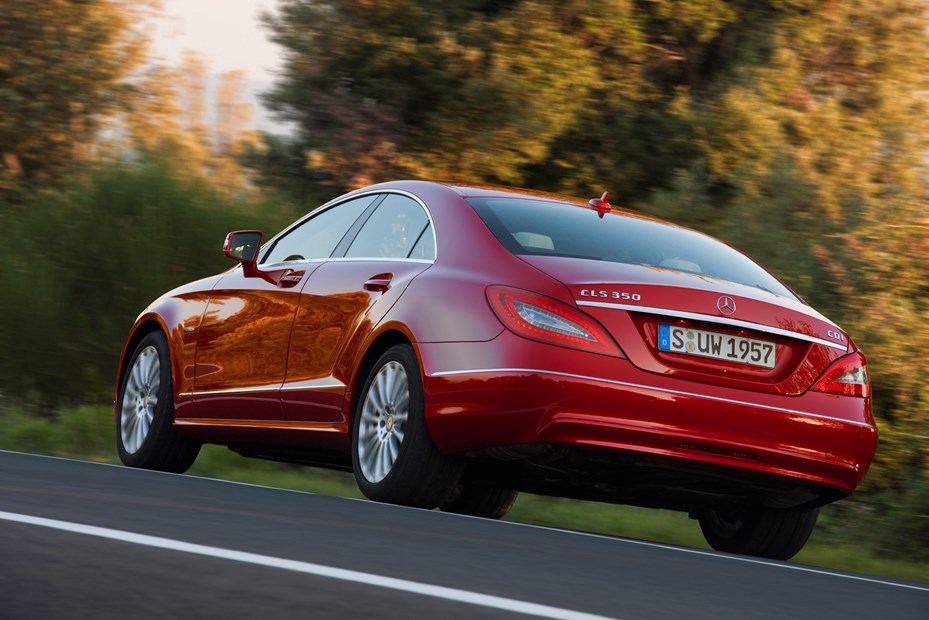
There’s a wide range of petrol and diesel engines supplying Mercedes-Benz CLS performance.
Petrol engines
The entry level petrol engine is a six-cylinder 3.5-litre 350 Blue Efficiency with a power output of 301bhp. This unit will power the CLS from a standing start to 62mph in 6.1 seconds and it has a top speed of 155mph. The petrol V8 500 Blue Efficiency version of the CLS has a whopping 402bhp. Accelerating from zero to 62mph can be achieved in 5.2 seconds and it has a limited top speed of 155mph. With 600Nm on tap slower vehicles do not present much of a problem. The petrol and diesel engines are refined and are mated to a seven-speed automatic gearbox. In manual mode the up- and downshifts using the steering-mounted paddles are slightly sharper with a petrol engine than with the diesel but the difference is only fractions. Driving enthusiasts will notice, though.
Diesel engines
There’s a six-cylinder 3.0-litre 350 CDI (diesel) Blue Efficiency with 261bhp. It will get from zero to 62mph in 6.2 seconds and it has a top speed of 155mph (limited). With plenty of pulling power this oil-burner has more than enough oomph to overtake slower traffic on single-lane carriageways. The second unit on offer is a four-cylinder 2.2-litre 250 CDI and it has a power output of 201bhp. This version will complete the benchmark sprint in 7.5 seconds and has a top speed of 150mph.
In 2014 a new entry-level diesel was added, the CLS 220 BlueTEC offers 168bhp and 400Nm of torque, allowing it to complete the 0-62mph dash in 8.3 seconds. And despite its four-cylinder set up, which is often the cause of criticism in smaller Mercedes models where refinement suffers, here in the CLS it is much better.
Parkers recommends
While the CLS250 CDI makes the most fiscal sense, more buyers will be tempted by the charms of the CLS350 CDI and we would happily be seduced by it too.
The CLS feels composed since there’s a little body roll in corners. It is wonderfully refined and effortlessly munches motorway miles. To make the car even better Mercedes boffins have introduced an updated version of the Airmatic suspension as well as a new electric steering system. As a result you get a better ride and sharper steering. The steering is light when in town making the CLS easy to manoeuvre in cramped city streets but get the car onto the open road and it will weight up, giving the driver a better feel and more confidence on turn-in. Although the steering is good it is a little over-assisted, which will disappoint driving enthusiasts who like to feel really connected to the road. In the rain, however, the CLS does get a little tail-happy if you are a bit too enthusiastic with the throttle. Keep the traction control switched on and you should have fewer problems even on wet roads.
As is the norm on high-end luxury cars you can choose between comfort mode – the default setting – and Sport. In Sport mode the suspension stiffens, the steering response is quicker and the gearing set for better acceleration. Mercedes has manufactured the frameless doors out of aluminium instead of steel – making a saving of around 24kg per door. The bonnet, front wings, boot lid, parcel shelf, various support profiles and substantial parts of the suspension and engines are all made of aluminium. All this has shaved off unwanted kilos to make the car as lightweight as possible and it has helped to give the CLS better road-holding ability. It may look like a large cumbersome beast, but it is surprisingly agile.


